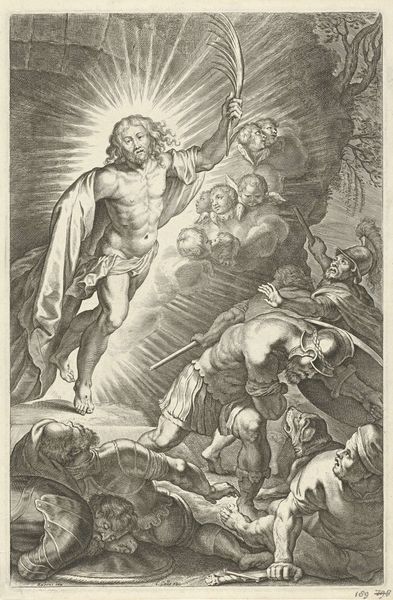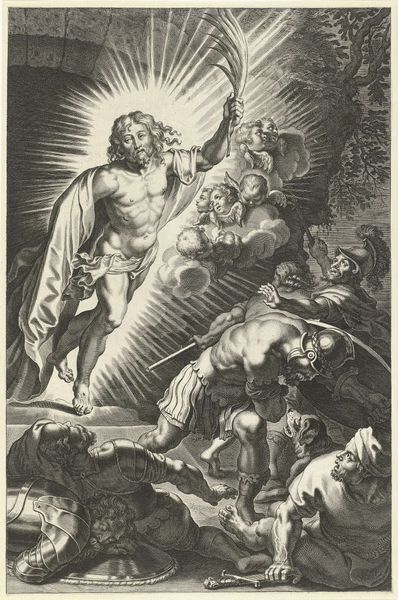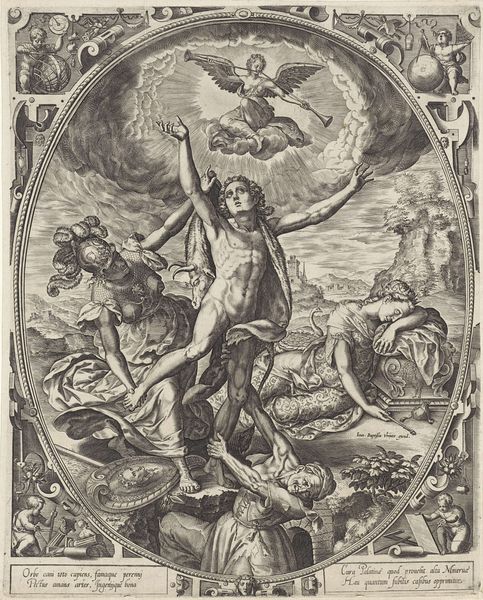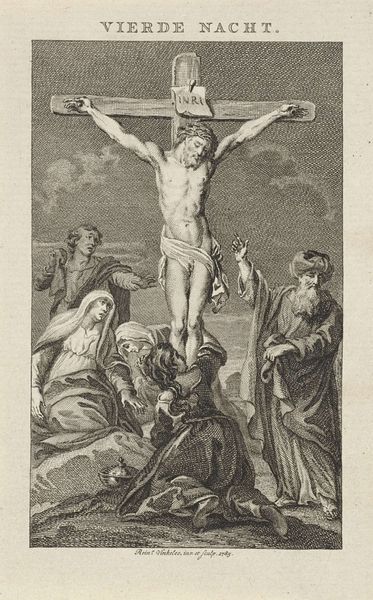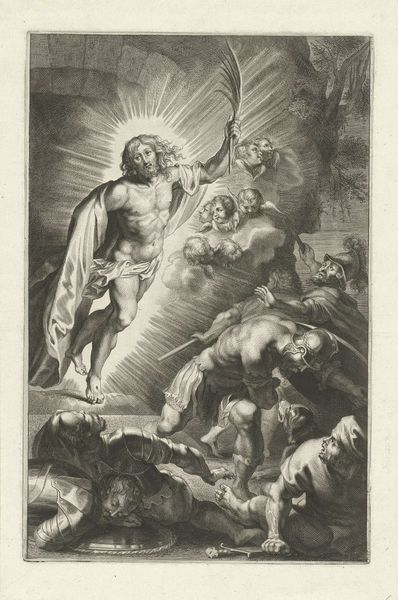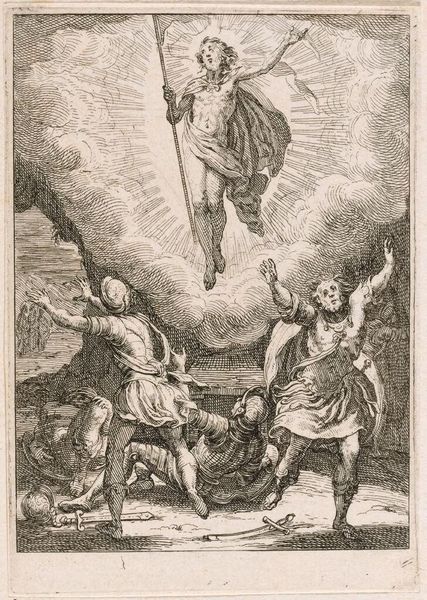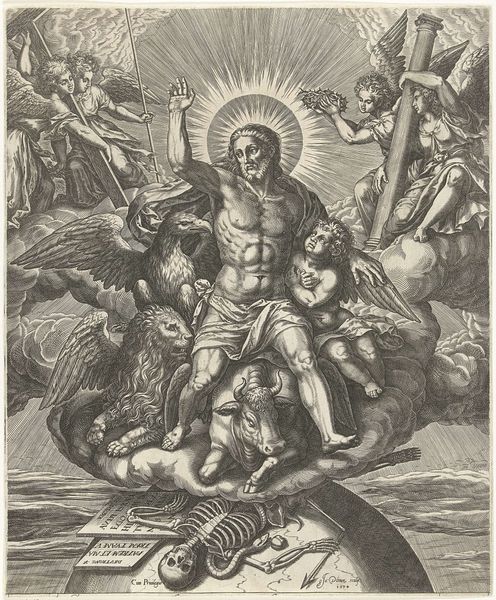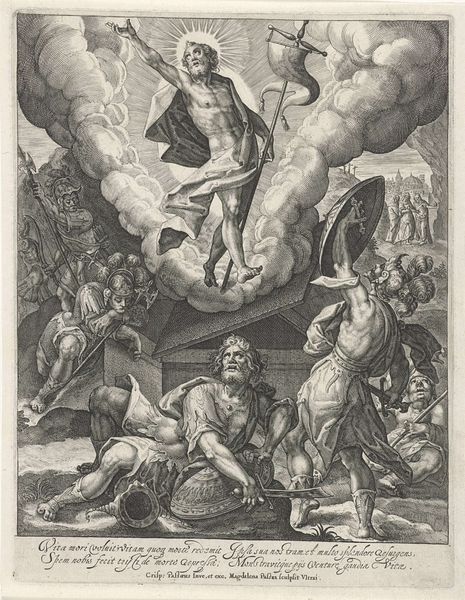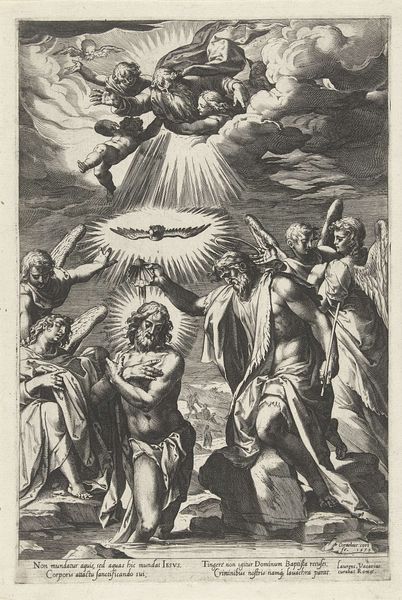
print, engraving
#
narrative-art
#
baroque
# print
#
figuration
#
history-painting
#
engraving
#
christ
Dimensions: height 130 mm, width 92 mm
Copyright: Rijks Museum: Open Domain
Editor: We are looking at Cornelis Galle I’s engraving, "Resurrection of Christ," dating from somewhere between 1586 and 1650. It's incredibly dramatic. The figure of Christ, bathed in light, is so striking compared to the chaos surrounding him. What catches your eye when you look at this piece? Curator: Immediately, the use of light and shadow becomes apparent. Galle's strategic employment of chiaroscuro directs the eye. Notice how the radiant burst behind Christ isn't merely representational, but also functions structurally to frame and elevate Him. The almost aggressive contrast serves to flatten certain forms while highlighting others, contributing to the overall emotional intensity. Editor: That's a good point. The light really does sculpt his form. But what about the figures below, cowering and seemingly terrified? How do they play into the composition? Curator: They serve as compositional anchors, their darker forms creating a visual counterpoint to Christ's illuminated figure. The arrangement isn't haphazard; observe how their postures and gestures lead the viewer’s eye upward, reinforcing the verticality and emphasizing the triumph suggested by Christ’s raised standard. It creates a kind of visual "launch" towards the upper portion of the engraving. Do you see it? Editor: I do now. So, it's not just about the religious narrative but also about how the artist uses visual techniques to convey that narrative? Curator: Precisely. The artist leverages these visual elements, the push and pull of light and dark, the directional lines created by the figures, to orchestrate the viewer’s experience. It's about formal relationships as much as religious representation. Editor: This has really changed how I see the print, I hadn't considered the compositional aspect in that much detail before. Curator: Indeed. Formal analysis offers us a lens into the artist’s intentionality and craft. It also enables a broader understanding, appreciating that the work communicates in more ways than initially assumed.
Comments
No comments
Be the first to comment and join the conversation on the ultimate creative platform.
